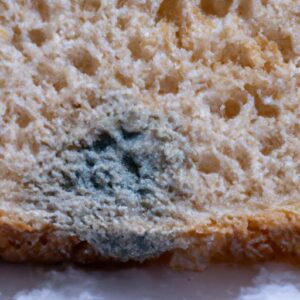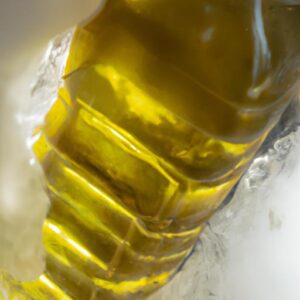Introduction
Food safety is a crucial concern in our daily lives, and one pathogen that often garners attention is Listeria. But what exactly is Listeria and how can we protect ourselves from it? In this article, we will delve into the world of Listeria, exploring its risks and the potential effectiveness of cooking in eliminating this harmful bacterium.
A. Definition and Overview of Listeria
Listeria, scientifically known as Listeria monocytogenes, is a type of bacteria commonly found in soil, water, and various animal products. It thrives in cold environments and can survive even in refrigerated conditions. Listeria can contaminate a wide range of foods, including raw vegetables, fruits, dairy products, and processed meats. Due to its ability to grow and multiply at low temperatures, it poses a significant threat to food safety.
B. Importance of Understanding the Risks Associated with Listeria Contamination in Food
Listeria infection, known as listeriosis, can have severe consequences, particularly for vulnerable individuals such as pregnant women, the elderly, and those with weakened immune systems. This bacterium can cause flu-like symptoms, gastrointestinal issues, and, in severe cases, even life-threatening complications such as meningitis or septicemia. Therefore, it is crucial to be aware of the risks of Listeria contamination to prevent its harmful effects.
C. Brief Explanation of Cooking as a Potential Method to Kill Listeria
Now, let’s turn our attention to cooking as a potential solution to eliminate Listeria. Heat is known to be effective in killing various bacteria, and cooking food thoroughly is a fundamental step in ensuring food safety. However, the question remains: Will cooking truly kill Listeria and make our meals safe to consume?
In the upcoming sections, we will explore the impact of cooking on Listeria bacteria, recommended cooking temperatures and times, factors affecting Listeria survival during cooking, and other methods to prevent Listeria contamination. By understanding these aspects, we can make informed decisions and minimize the risk of Listeria-related illnesses. So, let’s dive deeper into the world of Listeria and cooking, ensuring a safer culinary experience!
Stay tuned for Section II, where we will explore what Listeria is and its common sources of contamination. Together, we will unravel the mysteries of this harmful bacterium and equip ourselves with the knowledge to protect our health.
Section II: Understanding Listeria
A. What is Listeria?
Before we delve into the risks and solutions associated with Listeria, it’s essential to understand what this bacterium is. Listeria is a type of bacteria that can cause severe foodborne illnesses, particularly in vulnerable individuals. It belongs to the genus Listeria, and the most common species is Listeria monocytogenes. This bacterium is known for its ability to withstand a wide range of environmental conditions, including low temperatures, making it a formidable adversary in the realm of food safety.
B. Common Sources of Listeria Contamination in Food
Listeria can be found in various food sources, and being aware of these potential avenues of contamination is crucial in mitigating the risks. Raw vegetables, unpasteurized dairy products, deli meats, smoked seafood, and even certain soft cheeses can serve as potential reservoirs for Listeria. The bacterium can also contaminate food during processing, handling, and storage, making it imperative to exercise caution when dealing with these items.
C. Health Risks and Complications Associated with Listeria Infection
Listeria infection, or listeriosis, can have severe consequences, particularly for individuals with weakened immune systems, pregnant women, and the elderly. The symptoms of listeriosis may include fever, muscle aches, nausea, and diarrhea. In more severe cases, it can lead to meningitis, septicemia, or even fetal complications in pregnant women. Due to the potential gravity of Listeria infection, it is vital to prioritize preventive measures and understand the risks associated with this bacterium.
By comprehending the nature of Listeria, its common sources of contamination, and the health risks it poses, we can better appreciate the significance of implementing strategies to mitigate its impact. In the following sections, we will explore the role of cooking in eliminating Listeria, factors affecting its survival during cooking, and additional methods to prevent contamination. Let’s continue our journey towards a safer culinary experience, armed with knowledge and a determination to protect our well-being.
Stay tuned for Section III, where we will uncover the impact of cooking on Listeria and how it can potentially help us safeguard against this harmful bacterium.
Section III: The Role of Cooking in Killing Listeria
A. How does cooking affect Listeria bacteria?
Cooking plays a vital role in reducing the risk of Listeria contamination by effectively eliminating the bacteria. When food is cooked, the heat raises its internal temperature, which can be detrimental to Listeria. High temperatures disrupt the structure of the bacteria, causing the proteins and enzymes within it to denature and ultimately leading to its destruction. The thorough cooking process aims to ensure that Listeria is rendered harmless, making the food safe for consumption.
B. Recommended cooking temperatures and times to eliminate Listeria
To efficiently kill Listeria, it is crucial to adhere to recommended cooking temperatures and times. The United States Department of Agriculture (USDA) provides guidelines to ensure proper cooking practices. Generally, heating food to an internal temperature of 165°F (74°C) is considered safe to eliminate Listeria and other harmful bacteria. However, it is essential to note that different types of food may require specific temperatures and cooking durations. For instance, poultry, ground meats, and leftovers generally require higher temperatures and longer cooking times compared to other foods.
When cooking, it is crucial to use a food thermometer to accurately measure the internal temperature of the food. This ensures that it reaches the recommended temperature throughout, leaving no room for any surviving Listeria. By following these guidelines, you can significantly reduce the risk of Listeria-related illnesses and enjoy safe, delicious meals.
C. Importance of proper handling and storage of cooked food to prevent recontamination
While cooking effectively kills Listeria, it is equally important to handle and store cooked food properly to prevent recontamination. After cooking, promptly refrigerate any leftovers or perishable items within two hours. By chilling food promptly, you inhibit the growth of any Listeria that may have survived the cooking process. Ensure that the refrigerator temperature is set below 40°F (4°C) to maintain optimal conditions for food safety.
Additionally, it is crucial to handle cooked food with clean hands and utensils to avoid cross-contamination. Separate raw and cooked foods to prevent any potential Listeria contamination from raw ingredients. Utilize airtight containers or wraps to store cooked food, minimizing the risk of Listeria exposure from other items in the refrigerator.
By understanding the importance of proper handling and storage, you can maintain the safety of cooked food and prevent the recontamination of Listeria. Let’s now move on to Section IV, where we will explore the factors that affect Listeria survival during cooking. Together, we will gain a comprehensive understanding of how to effectively mitigate the risks associated with Listeria contamination.
Section V: Other Methods to Prevent Listeria Contamination
When it comes to food safety, cooking is just one piece of the puzzle. In addition to proper cooking techniques, there are several other crucial measures we can take to prevent Listeria contamination and ensure the safety of our meals.
A. Importance of Practicing Good Hygiene in Food Preparation
Maintaining good hygiene practices during food preparation is essential to minimize the risk of Listeria contamination. Always remember to wash your hands thoroughly with soap and warm water before and after handling food. This simple yet effective step helps eliminate any potential bacteria on your hands that could be transferred to the food. Additionally, make sure to clean cutting boards, knives, and other utensils with hot, soapy water after each use to prevent cross-contamination.
B. Proper Cleaning and Sanitization of Cooking Utensils and Surfaces
Alongside personal hygiene, cleaning and sanitizing cooking utensils and surfaces play a vital role in preventing Listeria contamination. Use hot, soapy water to clean utensils and equipment thoroughly, paying close attention to areas that come into contact with raw or potentially contaminated foods. After cleaning, sanitize the surfaces using a food-safe sanitizer or a mixture of bleach and water. Regularly disinfecting kitchen countertops, refrigerator shelves, and other food preparation areas helps eliminate any lurking bacteria.
C. Utilizing Safe Food Storage Practices to Minimize Listeria Growth
Proper food storage is paramount in preventing Listeria growth. Keep raw meats, poultry, and seafood separate from other foods to avoid cross-contamination. Store perishable items, such as dairy products and deli meats, at or below 40°F (4°C) in the refrigerator to inhibit bacterial growth. It is essential to consume these perishable foods before their expiration dates and discard any that show signs of spoilage. When reheating leftovers, ensure they reach a safe internal temperature to kill any potential Listeria bacteria.
By adopting these additional preventive measures, we can significantly reduce the risk of Listeria contamination in our kitchens. Remember, food safety is a collective effort, and every step we take towards it ensures the well-being of ourselves and our loved ones.
Stay tuned for the concluding section, where we will recap the key points discussed and emphasize the importance of cooking in eliminating Listeria. Together, let’s strive for safer and healthier meals!
Conclusion
In conclusion, understanding the relationship between cooking and Listeria is crucial for ensuring food safety. Cooking has the potential to kill Listeria bacteria, but it is essential to follow proper cooking guidelines to eliminate this harmful pathogen effectively.
Throughout this article, we have explored the definition and risks of Listeria contamination, emphasizing the importance of understanding its potential dangers. We have also examined the role of cooking in killing Listeria, discussing recommended cooking temperatures and times, as well as the significance of proper handling and storage of cooked food to prevent recontamination.
Moreover, we have explored various factors affecting Listeria survival during cooking, such as the types of food that are more susceptible to contamination and the variations in Listeria survival depending on cooking methods. It is crucial to be aware of these factors and take necessary precautions to minimize the risks associated with undercooking or improper cooking techniques.
To prevent Listeria contamination, it is not only essential to rely on cooking alone. Practicing good hygiene in food preparation, proper cleaning and sanitization of cooking utensils and surfaces, and safe food storage practices are equally important in reducing the growth and spread of Listeria bacteria.
By following these guidelines and staying informed about food safety measures, we can protect ourselves and our loved ones from the risks of Listeria contamination. Remember, food safety starts with you!
Thank you for joining me on this journey to understand the relationship between cooking and Listeria. Stay informed, stay safe, and enjoy your meals with peace of mind!
Stay tuned for more informative articles on food safety and other health-related topics!


